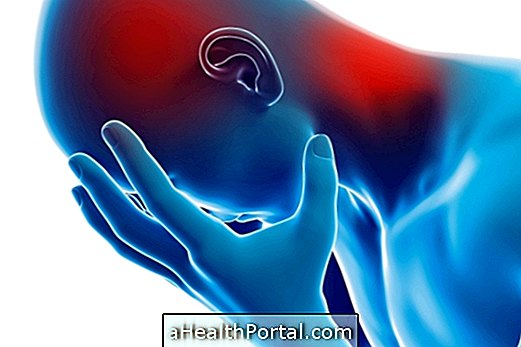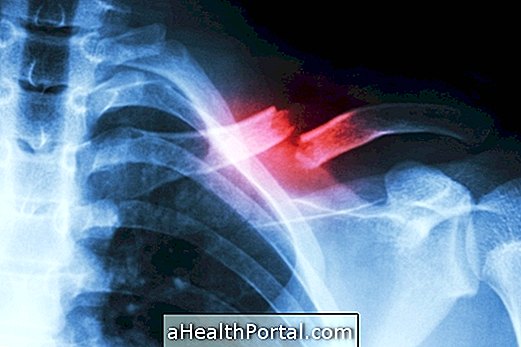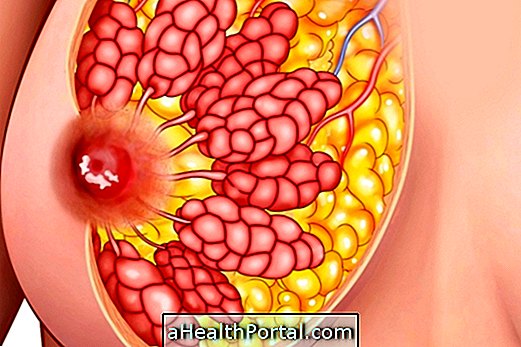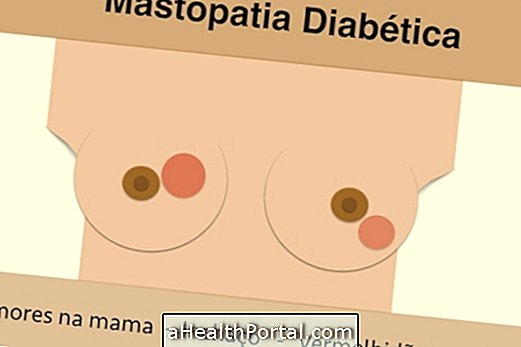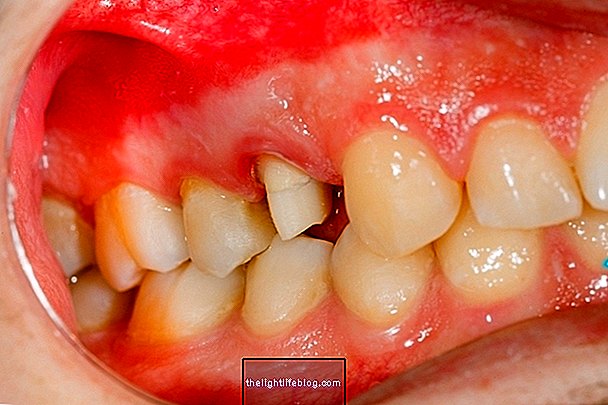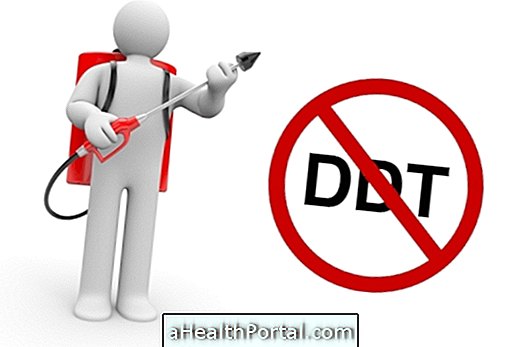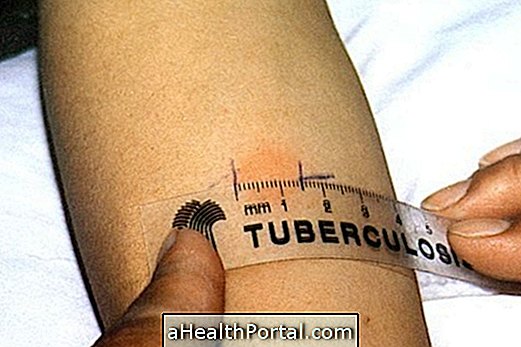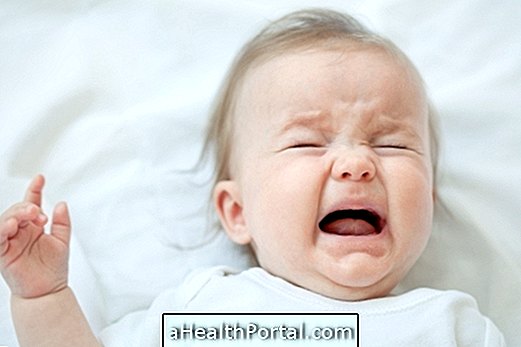Pain when breathing is often related to situations of great anxiety and, therefore, may not be a warning sign.
However, this type of pain can also arise associated with other health problems that affect the lungs, muscles and even the heart. Thus, when the pain when breathing lasts more than 24 hours or is accompanied by other symptoms such as chest pain, shortness of breath or dizziness, it is important to seek a pulmonologist or general practitioner to identify the correct cause and start the most appropriate treatment.
Some of the most common causes of pain when breathing are:
1. Anxiety crises

Anxiety attacks are characterized by symptoms such as rapid heartbeat, faster than normal breathing, feeling of heat, sweating and chest pain that can worsen when breathing. Anxiety attacks usually happen in people who suffer from anxiety on a day-to-day basis.
What to do: try to think of something other than what may have caused the anxiety crisis, perform some activity that you like and do breathing exercises in order to control your breathing, breathing in slowly through your nose and exhaling through your mouth until the crisis begins to to decrease. Take the test to find out if you may be suffering from an anxiety attack.
2. Muscle injury

Pain when breathing is frequent in situations of muscle injuries, such as muscle strain and, it may be due to excessive efforts, for example, in the gym or while practicing sports, when taking on very heavy objects or even in simpler situations how to cough, due to poor posture or during a time of stress. Usually the pain appears more localized in the chest region, under the ribs or in the back, for example.
What to do: it is recommended to rest and avoid efforts, especially carrying weights, even in daily tasks, to allow recovery from the injury. Applying a cold compress to the site can also help reduce discomfort. However, when the pain is very severe, it is advisable to consult a general practitioner, to start a more appropriate treatment. Learn more about how muscle sprains are treated.
In the event that the pain has arisen as a result of training, a trainer should be consulted to receive important guidance on injury prevention to prevent the pain from reoccurring.
3. Costochondritis

Costochondritis can be a cause of pain when breathing and is characterized by inflammation of the cartilages that connect the sternum bone to the upper ribs. In addition to pain when breathing, chest pain, shortness of breath and pain in the sternum are common symptoms of costochondritis.
What to do: in some cases, the pain disappears without the need for medical treatment, avoiding making efforts and resting whenever possible, since the pain worsens with movements. However, if the pain is very severe it is important to go to the general practitioner to confirm the cause and start the best treatment. Understand better what is costochondritis and what is its treatment.
4. Flu and cold

The flu and cold can cause pain when breathing, due, for example, to the accumulation of secretions in the respiratory tract and, they can present symptoms such as cough, runny nose, body pain, tiredness and, in some cases, fever.
What to do: Symptoms usually subside with rest and fluid intake because they help keep the respiratory tract moist and clear secretions. In addition, it is important to adopt some precautions, such as with food, that help to strengthen the immune system. Check out 6 natural remedies for flu and cold.
5. Diseases of the lungs

It is common for lung diseases such as asthma, pneumonia, pulmonary embolism or lung cancer to be associated with pain when breathing, mainly located in the back, since most of the lungs are found in the back region.
Asthma is a disease with symptoms such as shortness of breath and cough, in addition to pain when breathing. Although pain when breathing can be a symptom of simple situations like the flu or cold, in more severe cases it can mean, for example, pneumonia that, in addition to pain when breathing, can present other symptoms such as cough, runny nose, fever and secretions that may contain blood.
On the other hand, pain when breathing can also happen in a situation of pulmonary embolism, which is an emergency situation and which happens where a vessel in the lung is obstructed due to a clot. In these cases, the pain tends to worsen very quickly, cause coughing up blood and cause difficulty in breathing. In case of suspected embolism, it is important to go to the hospital immediately. Learn more about embolism and how to identify it.
What to do: the treatment depends on the lung disease and, therefore, it must be prescribed by the pulmonologist after identifying the correct cause through exams such as chest X-ray or computed tomography. In severe cases, where there is severe shortness of breath or when pneumonia or pulmonary embolism is suspected, it is important to go to the hospital quickly.
6. Pneumothorax

Pneumothorax is characterized by the presence of air in the pleural space, which is located between the chest wall and the lung, which causes increased pressure on the lung, causing symptoms such as difficulty in breathing, coughing and chest pain, in addition to pain when breathing.
This type of problem is more common after suffering a chest injury, as it can happen after falls or punctures, but it can also appear as a sequel to pneumonia or asthma, for example.
What to do: if there is a suspicion of pneumothorax it is important to go to the hospital to have tests and confirm the diagnosis, starting the most appropriate treatment, which has as main objective to remove excess air, relieving the pressure of the lung, through an aspiration of the lung. air with a needle. See more about what pneumothorax is and its treatment.
7. Pleurisy

Pain when breathing is very common in situations of pleurisy, which is characterized by inflammation of the pleura, the membrane that surrounds the lungs and the interior of the chest. Often, the pain is more intense when inhaling because the lungs fill with air and the pleura touches the surrounding organs, causing a greater sensation of pain.
In addition to pain when breathing, other symptoms such as difficulty breathing, coughing and pain in the chest and ribs may also appear.
What to do: It is important to go to the hospital so that the doctor can assess the symptoms and prescribe the most appropriate remedies for treatment, such as anti-inflammatory drugs. Better understand what pleurisy is, its symptoms and treatment.
8. Pericarditis

Pain when breathing may also be associated with pericarditis, characterized by inflammation of the membrane that lines the heart and pericardium, causing severe pain in the chest region, especially when trying to take a deep breath. Pericarditis usually arises as a result of other diseases, such as lupus, infections or traffic accidents.
What to do: The treatment should be indicated by the cardiologist based on the symptoms and the clinical situation of each person. However, it is important that the person maintains rest. Understand more about treatment for pericarditis.
When to go to the doctor
It is important to go to the hospital if there is a pain when breathing that lasts for more than 24 hours, especially if it is accompanied by other symptoms such as sweating, difficulty breathing, dizziness or chest pain, so that the person can be evaluated and have tests to diagnose what is the cause of the pain when breathing, starting the most appropriate treatment.
Was this information helpful?
Yes No
Your opinion is important! Write here how we can improve our text:
Any questions? Click here to be answered.
Email in which you want to receive a reply:
Check the confirmation email we sent you.
Your name:
Reason for visit:
--- Choose your reason --- DiseaseLive betterHelp another personGain knowledge
Are you a health professional?
NoMedicalPharmaceuticalsNurseNutritionistBiomedicalPhysiotherapistBeauticianOther
Bibliography
- ST VICENT'S HOSPITAL HEART HEALTH. Types of Chest Pain. Available in: . Accessed on 19 Jan 2021
- SANTOS, Elizabete, TIMERMAN, Ari. THORACIC PAIN IN THE EMERGENCY ROOM: WHO IS AND WHO CAN BE RELEASED?. Rev Soc Cardiol State of São Paulo. 28. 4; 394-402, 2018
- NEWS-MEDICAL LIFE SCIENCES. Types of pericarditis. Available in: . Accessed on 19 Jan 2021
- NEWS-MEDICAL LIFE SCIENCES. Complications of rheumatoid arthritis. Available in: . Accessed on 19 Jan 2021
- BREATHE. Service Protocol of the Thoracic Surgery Unit of the Respirar Clinic. Available in: . Accessed on 19 Jan 2021
- ONCOGUIA. Signs and Symptoms of Lung Carcinoid Tumor. Available in: . Accessed on 19 Jan 2021
- MSD. Lung cancer: Guidelines for cancer patients. 2018. Available at:.
- EUROPEAN LUNG FOUNDATION. PULMONARY VASCULAR DISEASE. Available in: . Accessed on 19 Jan 2021
- PEDIATRY SOCIETY OF RS. Pneumonia. Available in: . Accessed on 19 Jan 2021
- BREATHE. Pneumonia. Available in: . Accessed on 19 Jan 2021
- CLINICAL PROTOCOL AND THERAPEUTIC GUIDELINES. ASTHMA. 2013. Available at:. Accessed on 19 Jan 2021
- PORTUGUESE SOCIETY OF PNEUMOLOGY. Everything you should know about ASMA. 2017. Available at:. Accessed on 19 Jan 2021
- U.S. DEPARTMENT OF HEALTH AND HUMAN SERVICES. Influenza (Flu). Available in: . Accessed on 19 Jan 2021
- U.S. DEPARTMENT OF HEALTH AND HUMAN SERVICES. The flu: Caring for someone sick at home. 2010. Available at:. Accessed on 19 Jan 2021
- INEM. ANXIETY AND PANIC. 2017. Available at:. Accessed on 19 Jan 2021
- WEST SUFFOLK NHS FOUNDATION TRUST. Costochondritis (rib pain). 2019. Available at:. Accessed on 19 Jan 2021
- PATIENT. Costochondritis. Available in: . Accessed on 19 Jan 2021
- MAGAZINE OF THE SOCIETY OF CARDIOLOGY OF RIO GRANDE DO SUL. Chest pain. 2004. Available at:. Accessed on 19 Jan 2021
- PHYSIOPEDIA. Intercostal Muscle Strain. Available in: . Accessed on 19 Jan 2021
- HEALTHLINE. How to Identify and Treat an Intercostal Muscle Strain. Available in: . Accessed on 19 Jan 2021


